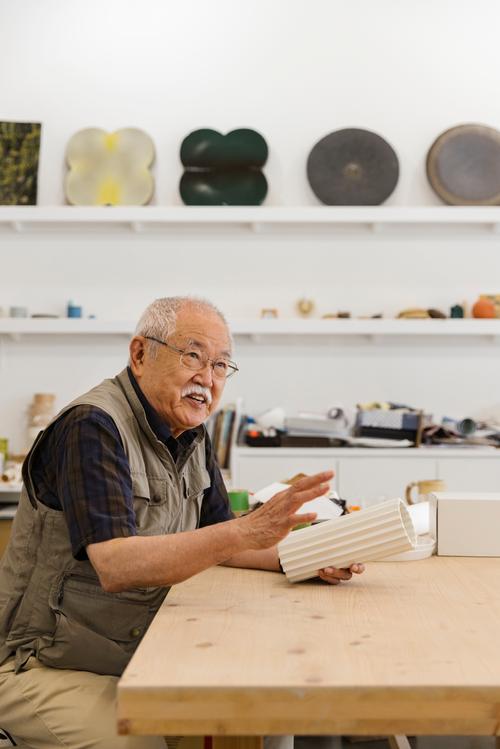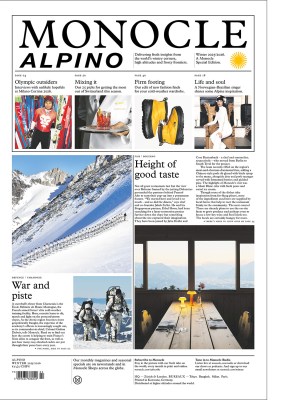The late-in-life entrepreneur: How designer Fujiwo Ishimoto started afresh after retirement
For some, retirement is an opportunity to take a well-earned rest. For 83-year-old Japanese textile designer Fujiwo Ishimoto, however, it marked the moment when he decided to change the course of his life and launch a new business. After nearly five decades in Finland, much of it spent working for lifestyle brand Marimekko, Ishimoto upped sticks in 2020 and moved to Matsuyama, a city of half a million people, in Ehime prefecture on the island of Shikoku. It wasn’t far from where he had grown up. Life had come full circle.

“I always thought that I would come back to Japan,” he says. “I don’t have family in Finland. Eventually, I realised that I had nothing to keep me there.” After designing some 400 textile patterns for Marimekko, he started afresh with his own brand, Mustakivi, which means “black stone” in Finnish. He built a small studio and showroom on a sloping street leading up to a temple in the Dogo neighbourhood – the home of what is said to be the oldest hot spring in Japan. Today he spends his days there designing at a large table and exhibiting his vibrant textiles and ceramics.
“I thought about basing myself in Kyoto but it was too expensive and I didn’t know anybody there,” he says. “In Matsuyama, I’m close to Tobe, my hometown, where I can source clay for my ceramics. My sister and her family live nearby too. Plus, it’s about the same size as Helsinki so the scale feels very familiar.”
Marimekko, which was founded in Helsinki in 1951, has always had a strong audience in Japan. Ishimoto had encountered some of the best Finnish design by the likes of Kaj Franck at a department-store exhibition in Japan in 1964. He started working in graphic design and advertising but left in 1970 to travel, stopping in London, New York and Copenhagen before landing in Finland. “It was November so it was white with snow,” he says. “It rarely snows in Ehime so it was exciting.”
After a few attempts (and rejections), he was hired by Marimekko as a textile designer in 1974 and ended up staying for 32 years. In 1989 he also started working for ceramics brand Arabia, where he built up an impressive body of work with a tightly woven mix of Japanese and Finnish influences. His products and textiles have Finnish names but feature Japanese motifs drawn from nature and are suffused with the two cultures’ shared sense of practicality. Kuppi is a simple ceramic cup for everyday use that would work equally well for green tea as for coffee. The Tuuli cup borrows its design from grass swaying in the breeze. Keiryu is a vivid blue towel inspired by the flow of a mountain stream and manufactured in Imabari, the centre of Japanese towel making, which is also in Ehime.
Many of Ishimoto’s Marimekko designs seem to travel between his homeland and Europe, with influences ranging from Japanese flowers to decorations of village houses that he saw in rural Poland. Nature is still his biggest inspiration – the citrus that grew in his family home or the flowers he noticed alongside a railway track.
In Tobe, a town famous for its porcelain, Ishimoto is now working with ceramics using his own electric kiln. This past summer he covered the showroom walls with ceramic magnolia flowers and exhibited bowls whose brightly coloured hues were inspired by kamifusen, traditional Japanese paper balloons.
Mustakivi has allowed Ishimoto to revisit some of his earlier designs too. On the studio table, there’s a vase that was once rejected for being too complicated to make. A striking tenugui cotton cloth on sale in the shop is printed with an old design that was originally turned down by Marimekko. Another black-and-white cloth features a drawing of a carnation that Ishimoto used on a plate 30 years ago.
The shop is popular for its towels, tote bags, cards, ceramic tableware – made by a factory in Tobe – and cloths printed with his many designs. Despite his achievements, Ishimoto is self-deprecating and seems genuinely surprised by the level of interest in his creations. He likes to work in peace, pursuing the designs that he cares about. As for the future, he is open to offers. He says that he wants to focus more on pottery these days. “Working like this with my hands is keeping me healthy.”
mustakivi.jp


